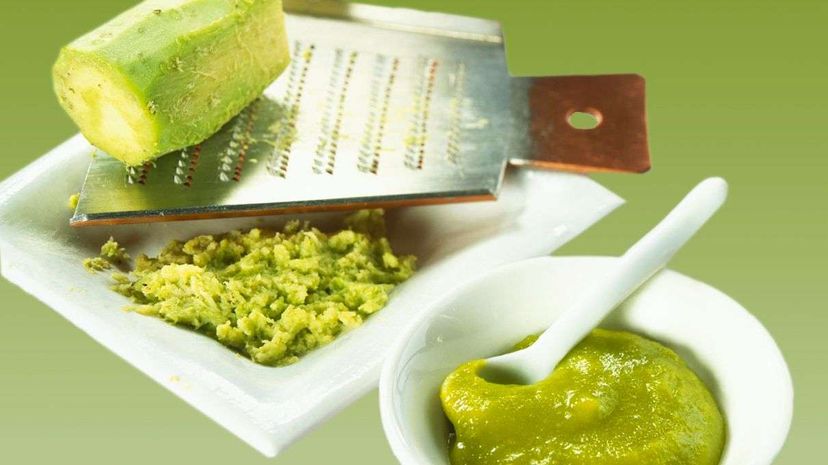
If the "wasabi" the waiter brings out to accompany your sushi could talk, it would have a lot of explaining to do. First off, that pungent green paste is not the real thing. It's not even close. It's actually a mixture of European mustard, horseradish and green food coloring. That's because real wasabi is very expensive. (One website was selling a half pound for $85). Even in Japan, it's rare for restaurants to use it.

Wasabi is so expensive because it's hard to cultivate. It likes to grow in Japanese mountain spring beds and doesn't do well when grown en masse in a greenhouse, although at least one farmer in the U.S. is successfully doing it.
Advertisement
The part of the wasabi plant that's used as a condiment is the rhizome or root-like stem. This is what's left after the leaves and shoots are removed. If you're lucky enough to go to a restaurant serving the real thing, you'll want to have them bring the rhizome to the table along with a grater so the chef can grate it fresh. Wasabi starts to lose its kick around 15 minutes after being grated or cut. One writer described the taste of fresh wasabi as "strong and hot, but with no harshness and no lasting burn... It tastes green, herbal, distinctly plant-like (unlike the imitation version)."
When restaurants are trying to keep costs down, they'll substitute a horseradish mixture for the wasabi. The reason this works is because both ingredients get their pungency from the same family of compounds called isothiocyanates. However, wasabi has more of these spicy chemicals than horseradish does. The video from the American Chemical Society explains more about the chemical process.
Scientists are also looking into wasabi's medicinal properties. It appears to relieve allergy symptoms, fight cancer and inhibit bacterial growth, though more research is needed. The anti-microbial attribute might be why it traditionally accompanies sushi — it's a way of counteracting any possible ill effects of eating raw fish.
Advertisement